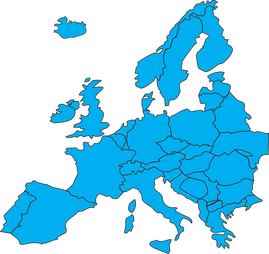WHAT IS ART THERAPY?
A DESCRIPTIVE DEFINITION
Art therapy is a mental health profession that also has application in social, educational and medical fields. Art therapists enlist the creative process of art making to enhance the mind/body connection, foster personal development and improve psychological, and/or affective, cognitive and relational well-being of individuals, groups and families of all ages and backgrounds. Art therapy is based on the premise that the creative process generated in artistic self-expression, when practiced by a professionally trained art therapist, fosters the growth and development of the agentic sense of self. This art-making process involves personal exploration with visual/tactile art materials (drawing, painting, sculpture, and other expressive art forms, etc.) where imagery may or may not result.
Art therapy involves a tripartite relational structure: patient/client with art image; patient/client with art therapist; art therapist with art image. We use the term art image to refer to what we call the art product resulting from the individual’s interaction with the art materials, whether or not a discreet image results from an exploratory, often playful, process.
The discipline of Art Therapy encompasses a spectrum of clinical and non-clinical practice of art therapy and art psychotherapy. It comprises a variety of modalities adaptable to specific client/patient needs and populations. Practiced in the safe, non-judgmental therapeutic setting, the aims of Art Therapy include the following: help individuals reduce anxiety and depression, improve relationships, work through conflicts, emerge from traumatic life experiences, develop a sense of personal agency, regulate affect, and increase self-reflection and awareness. Making affective connections with imagery within the therapeutic setting of the art therapy relationship helps individuals to accept themselves for whom they are.
Art Therapy integrates the fields of human development, visual art, and the creative process. The language of Art Therapy or specific approach evolves from a combination of theoretical and experiential bases. Based upon an understanding of early and later psychological and psychosocial developmental processes that include the cognitive, affective, and relational, Art Therapy enables individuals to discover their internal worlds as expressed via imagery and to strengthen their sense of self. The Art Therapy process fosters mind/body integration by working also with the kinesthetic and sensory-perceptual apparatus, thus building up the neural connections.
European art therapists recognize and accept that training approaches and clinical practice may differ among European countries.
Art therapy involves a tripartite relational structure: patient/client with art image; patient/client with art therapist; art therapist with art image. We use the term art image to refer to what we call the art product resulting from the individual’s interaction with the art materials, whether or not a discreet image results from an exploratory, often playful, process.
The discipline of Art Therapy encompasses a spectrum of clinical and non-clinical practice of art therapy and art psychotherapy. It comprises a variety of modalities adaptable to specific client/patient needs and populations. Practiced in the safe, non-judgmental therapeutic setting, the aims of Art Therapy include the following: help individuals reduce anxiety and depression, improve relationships, work through conflicts, emerge from traumatic life experiences, develop a sense of personal agency, regulate affect, and increase self-reflection and awareness. Making affective connections with imagery within the therapeutic setting of the art therapy relationship helps individuals to accept themselves for whom they are.
Art Therapy integrates the fields of human development, visual art, and the creative process. The language of Art Therapy or specific approach evolves from a combination of theoretical and experiential bases. Based upon an understanding of early and later psychological and psychosocial developmental processes that include the cognitive, affective, and relational, Art Therapy enables individuals to discover their internal worlds as expressed via imagery and to strengthen their sense of self. The Art Therapy process fosters mind/body integration by working also with the kinesthetic and sensory-perceptual apparatus, thus building up the neural connections.
European art therapists recognize and accept that training approaches and clinical practice may differ among European countries.


